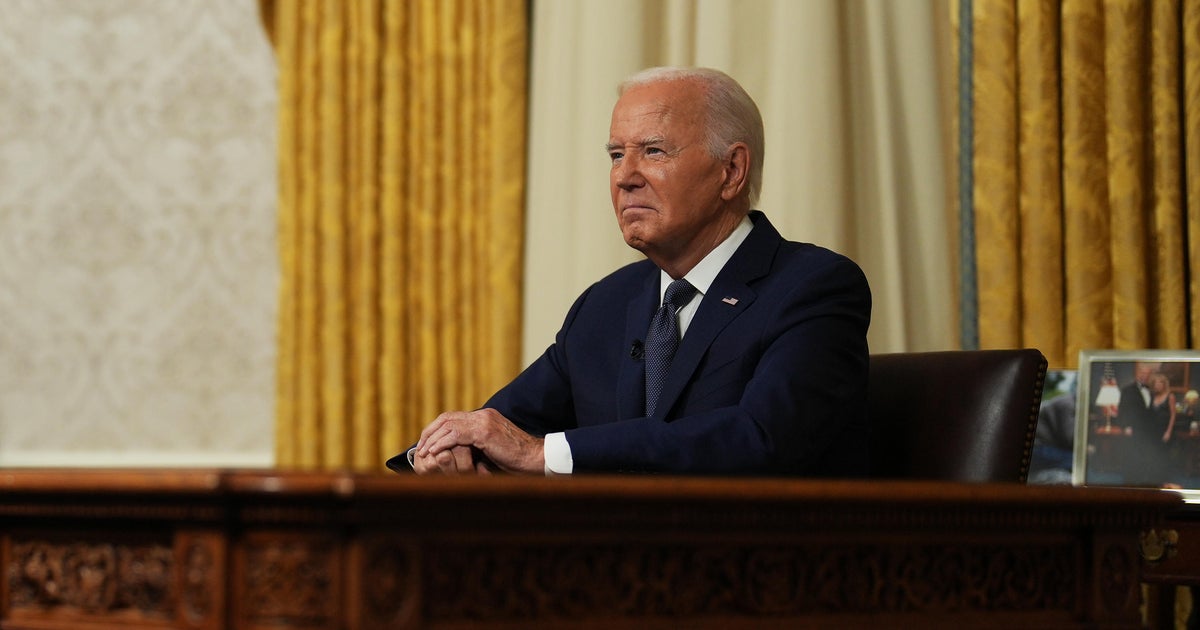Pelosi launches impeachment inquiry into Trump: What is it and what happens next?
Speaker of the House Nancy Pelosi's announcement of the establishment of a formal impeachment inquiry into President Donald Trump centers on a conversation Mr. Trump had with the president of Ukraine to investigate potential political opponent Joe Biden, and also on the suspension around the same time of U.S. military aid for Ukraine.
The president discussed Biden in a phone call with the newly elected president of Ukraine on July 25, and the transcript of that call has been released. Around the time of the call Mr. Trump instructed aides to hold off on releasing nearly $400 million in military aid to Ukraine, according to a senior administration official.
Here's what to know about the impeachment of a president:
What is impeachment?
Impeachment is the constitutional process where the lower house of legislative branch — the House of Representatives — brings charges against a civil officer in government — in this case the president. It is similar to an indictment, and the Senate then tries the case with the chief justice of the Supreme Court overseeing the trial. A two-thirds majority in the Senate is required to convict and remove the president from office. That means 67 senators would need to agree to remove Mr. Trump.
What does the Constitution say about impeachment?
The Constitution clearly lays out the process for impeachment.
Article 1, Section 2, states: "The House of Representatives... shall have the sole power of impeachment."
Article I, Section 3, states: "The Senate shall have the sole power to try all impeachments."
Article II, Section 4 states: "The President… shall be removed from Office on Impeachment for, and Conviction of, Treason, Bribery, or other high Crimes and Misdemeanors."
High crimes and misdemeanors are not defined in the Constitution, which means it's up to Congress to decide what constitutes an impeachable offense.
What are the steps of impeachment?
1. Congress can open an impeachment inquiry in the House Judiciary Committee to investigate whether impeachment is called for. The House can vote on formalizing the inquiry but is not constitutionally required to do so. House Speaker Nancy Pelosi chose not to hold a vote, though House Republicans called for one.
2. Several House committees are building the case for impeachment, and the Judiciary Committee will evaluate the recommendations and determine whether there is sufficient evidence to recommend that the full House vote on articles of impeachment.
2. The House of Representatives either passes or doesn't pass the Articles of Impeachment by a simple majority vote. If passed by a majority vote, the president has been "impeached." Impeachment, however, is not the same as removal from office. The process would then move to the Senate.
3. The Senate tries the accused president, with the chief justice overseeing the proceedings. Conviction in the Senate requires two-thirds vote — or 67 votes out of 100 senators. Democrats, who hold 47 seats, would need 20 of the current 53 Republican senators to agree with them on the impeachment charges. If convicted, the defendant is immediately removed from office. In this hypothetical scenario, Vice President Mike Pence would become president.
Which presidents have been impeached before?
Andrew Johnson in 1868. Johnson was impeached by the House on 11 articles of impeachment, namely violating the Tenure of Office Act, which involved his firing of Secretary of War Edwin M. Stanton. Johnson was acquitted in the Senate by a vote of 35-19, one vote short of 36 votes needed.
Bill Clinton in 1998. Clinton was impeached by the House on two articles of impeachment: Perjury and obstruction of justice. These alleged violations related to a sexual harassment lawsuit filed against Clinton by Paula Jones. He was acquitted by vote of 45-55 and 50-50.
Was Nixon impeached for Watergate?
No. The House Judiciary Committee did open an impeachment investigation into President Nixon, and approved three articles of impeachment: obstruction of justice, abuse of power, contempt of Congress. But Nixon resigned on August 8, 1974 before the House of Representatives could vote on impeachment.
Correction: This story has been updated to reflect that 67 Senate votes would be needed to convict, not 66.



